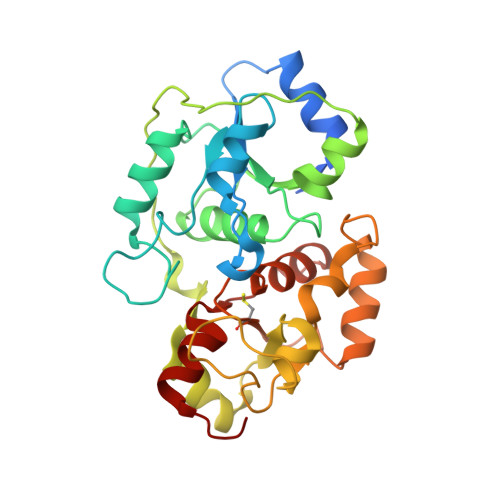Structure and Kinetic Analysis of H2S Production by Human Mercaptopyruvate Sulfurtransferase.
Yadav, P.K., Yamada, K., Chiku, T., Koutmos, M., Banerjee, R.(2013) J Biological Chem 288: 20002-20013
- PubMed: 23698001
- DOI: https://doi.org/10.1074/jbc.M113.466177
- Primary Citation of Related Structures:
4JGT - PubMed Abstract:
Mercaptopyruvate sulfurtransferase (MST) is a source of endogenous H2S, a gaseous signaling molecule implicated in a wide range of physiological processes. The contribution of MST versus the other two H2S generators, cystathionine β-synthase and γ-cystathionase, has been difficult to evaluate because many studies on MST have been conducted at high pH and have used varied reaction conditions. In this study, we have expressed, purified, and crystallized human MST in the presence of the substrate 3-mercaptopyruvate (3-MP). The kinetics of H2S production by MST from 3-MP was studied at pH 7.4 in the presence of various physiological persulfide acceptors: cysteine, dihydrolipoic acid, glutathione, homocysteine, and thioredoxin, and in the presence of cyanide. The crystal structure of MST reveals a mixture of the product complex containing pyruvate and an active site cysteine persulfide (Cys(248)-SSH) and a nonproductive intermediate in which 3-MP is covalently linked via a disulfide bond to an active site cysteine. The crystal structure analysis allows us to propose a detailed mechanism for MST in which an Asp-His-Ser catalytic triad is positioned to activate the nucleophilic cysteine residue and participate in general acid-base chemistry, whereas our kinetic analysis indicates that thioredoxin is likely to be the major physiological persulfide acceptor for MST.
- Department of Biological Chemistry, University of Michigan Medical Center, Ann Arbor, Michigan 48109-0600, USA.
Organizational Affiliation:




















